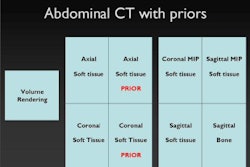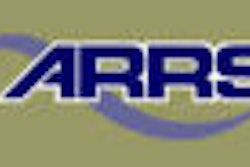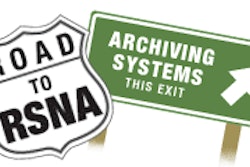The Integrating the Healthcare Enterprise (IHE) Portable Data for Imaging (PDI) integration profile provides for interchange of patient records on CDs. But institutions still need to integrate the data with local records and workflow. Enter the IHE Import Reconciliation Workflow (IRWF) integration profile.
The IRWF profile is a "methodology for importing DICOM data into your local PACS system," said Cynthia Levy of Merge Healthcare unit Cedara Software of Mississauga, Ontario. She discussed the new IHE integration profile during a joint presentation with Andrew Casertano of the Department of Veterans Affairs (VA) at the SCAR 2006 annual meeting in Austin, TX.
Today's imaging environment is characterized by a dramatically increasing number of digital studies. In addition, the number of external referrals and patient transfers continues to grow, requiring the transfer of digital data instead of films and documents, Levy said.
The solution in radiology has been the use of DICOM portable media, which allows for transfer of images and using them from one place to another, Levy said. That still leaves the problem of handling film and paper documents, however.
And digital media comes with its own set of problems.
"In the film world, we were able to look at prior studies by putting the prior films and the current films up, and what was really nice is that it was primarily done for you," she said. "In the digital world, things get a little more complicated. The first question is, can I even read this CD that somebody gave me? Now that I have this CD, can I read the images that are on the CD? And then the question is, can I process these images so I can look at specific things while I'm doing it? And finally, how do I handle it within my own current PACS now that I have the digital data?"
IHE's PDI profile went beyond DICOM Part 10: Media Storage and File Format for Media Interchange, providing a standardized CD format, some security functionality, and an optional DICOM viewer, Levy said.
"It increases the chances that I'll actually be able to work with the contents of the CD," she said. "Secondly, it'll allow me to have a consistent way to look at the images on the CD. And finally, it will allow me, because these are DICOM images, to actually be able to clinically review the images."
While PDI solves part of the portable media problem, institutions still must determine, however, how to deal with outside identifiers, unknown patients, missing or misidentified data, referrals, nonstandard formats, film, and screen prints. Many large institutions around the world are facing problems with import reconciliation, Casertano said.
Importing studies
Study importation can be managed in two different ways. In a scheduled import, the institution orders the studies they want to import and places them on a work list to provide local demographics and local procedure information. For an unscheduled import, the institution doesn't electronically order the studies to be imported, but instead relies on the import application to obtain local demographics provided by a demographics supplier, Levy said.
Using IRWF, import reconciliation is performed as part of the import process. The import application accesses corresponding data from the local HIS/RIS/PACS and identification data fields are updated with new data from the local system, she said. The original data are also retained elsewhere in the imported objects, providing a mechanism to go back to the original data if it weren't properly imported.
The three key actors in IRWF are the importer (a system that imports evidence objects such as images, presentation states, key image notes, or evidence documents from hard copy or digital media), patient demographics supplier (a patient information repository that can be searched on demographic-related fields), and the department system scheduler/order filler (a system that provides work lists and monitors progress).
The IRWF profile was introduced at the 2006 SCAR meeting. A vendor education workshop was held in June, and trial implementation by vendors is scheduled for September to November 2006. Vendor test results are scheduled to be provided in November, and the profile will be part of an IHE Connectathon scheduled for January 2007.
By Erik L. Ridley
AuntMinnie.com staff writer
July 17, 2006
Related Reading
IHE seeks comment on patient coordination supplements, June 23, 2006
American College of Physicians adopts IHE, June 7, 2006
IHE calls for nominations for ITI co-chairs, June 7, 2006
IHE technical frameworks available, July 12, 2005
IHE supplements open for comment, June 28, 2005
Copyright © 2006 AuntMinnie.com



















